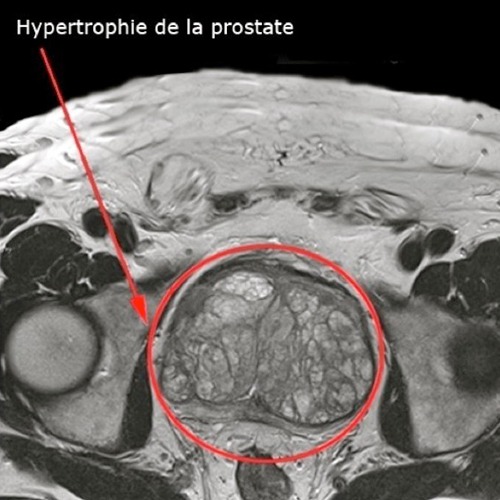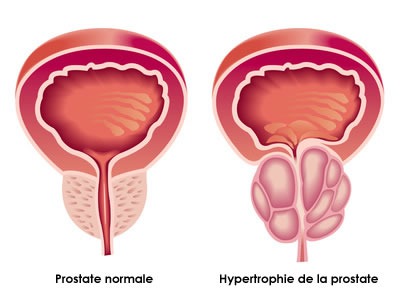Benign prostatic hyperplasia
What is it?
Benign prostatic hypertrophy (BPH) is a common disease in men, most often seen after the age of 60. Clinically, it results in lower urinary tract symptoms (LUTS), which are not specific to BPH because they are also present in vesical, neurological or tumoural diseases of the lower urinary tract.
The prostate is a genital gland that is normally small in young adults, but it generally increases in volume in the majority of men over fifty. The histological basis of BPH is benign hyperplasia, whose origin is not entirely clear. It appears around the age of 40 and manifests from 60 years in most cases. It is a progressive disease developing over several decades. Several theories exist, of which the two most recently studied are the hormonal and stromal theories.
Symptoms
The manifestations of BPH are due to the obstruction of urine flow through the urethra and are also due to the concomitant effects of prostate volume and muscle activity. The symptoms can be highly varied and appear gradually with increased daytime and nocturnal urinary frequency, decreased strength of the urine stream, feeling that the bladder is not completely empty, dysuria and an urge to urinate, sometimes going as far as acute urinary retention requiring bladder catheterisation.
Treatments
After excluding, by urinalysis and possibly an ultrasound or cystoscopy, pathologies such as bladder tumours or infections, the discussion with the patient leads to a possible medical treatment of symptoms. The different treatment approaches include phytotherapy or alpha-blockers (the current standard). Alpha-blockers provide quick relief of symptoms but sometimes with side effects, among which a decrease in blood pressure and occasionally, reduced ejaculation, should be emphasised.
Therapeutic options also exist with 5-alpha reductase inhibitors. They reduce prostate volume and can be indicated in cases of very enlarged prostate and when treatment with alpha-blockers is contraindicated. Recently, treatments combining both approaches have appeared on the market and are prescribed depending on the severity of symptoms or the presence of complications. When symptoms are resistant to standard treatment or complications develop, surgical treatments are possible. These include two main treatment groups: minimally invasive and conventional treatments by endoscopic resection of the prostate or open surgery or robotic surgery of the adenoma.
Care at the SIPC
Our Center provides comprehensive care, from diagnosis to treatment. After a detailed medical history with the patient, we perform a digital rectal examination and a PSA blood test to exclude any suspicion of a malignant component.
If the case is clear, we offer medical treatment or simply reassure our patients. If necessary, we perform additional tests by flow measurements and possibly urodynamics. The latter allows to identify the origin of the symptoms and to differentiate, in most cases, bladder histology or prostatic obstruction. We can also perform a cystoscopy and transrectal sonography if necessary.
Our Center provides regular follow-up of patients who receive only one surveillance or medical treatment. This follow-up can of course be assured in coordination with the patient's family doctor.
In certain cases, especially in young patients wishing to preserve their ability to ejaculate, we offer minimally invasive therapies such prostatic stent, urolift, thermotherapy or Thulium laser. These therapies help relieve symptoms with few side effects. Indeed, their long-term effectiveness is not yet clear.
In situations where a final measure is necessary or if BPH complications exist, conventional treatment is necessary. It consists of endoscopic resection of the prostate for which there are several options: bipolar, unipolar or laser, depending on the discussion with the patient and the situation. In the case of very large prostatic adenoma, an open transvesical adenomectomy or robotic surgery is possible.


